The Eight Species Of Curlews
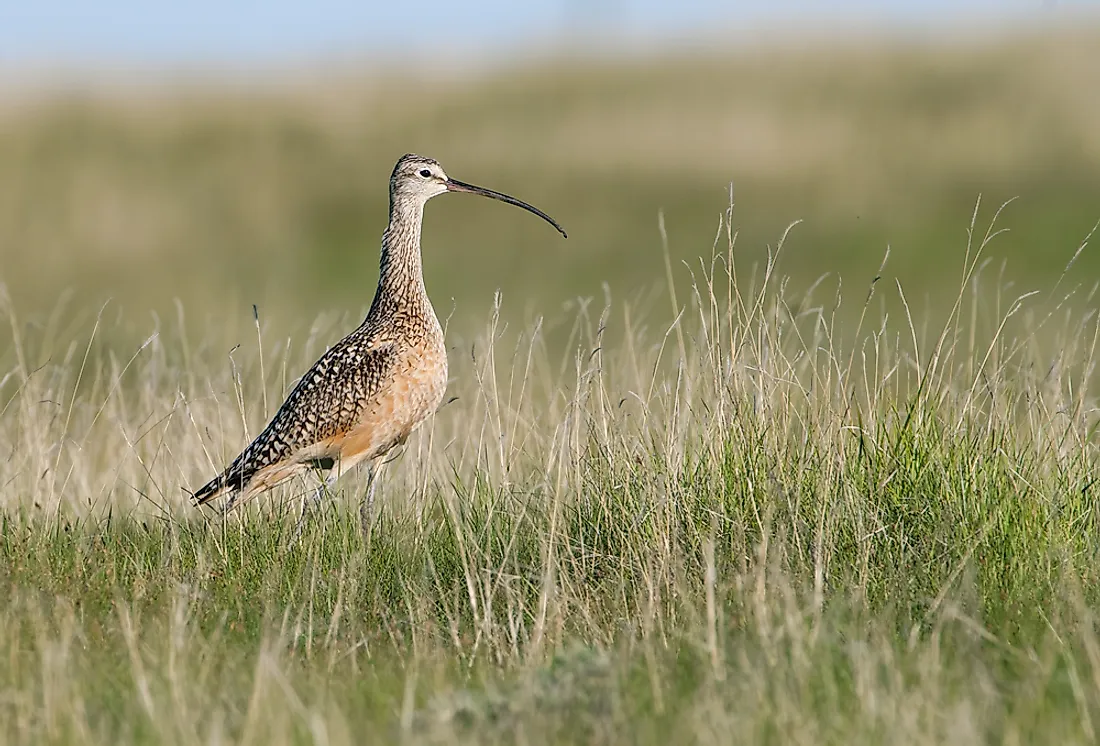
The curlews are birds of the Numenius genus and Scolopacidae family. These birds have a characteristic mottled brown colored plumage. Their bills are long, down-curved, and slender. The curlews are distributed worldwide and most are migratory in nature. Curlews belong to any of the eight species mentioned below:
8. Whimbrel
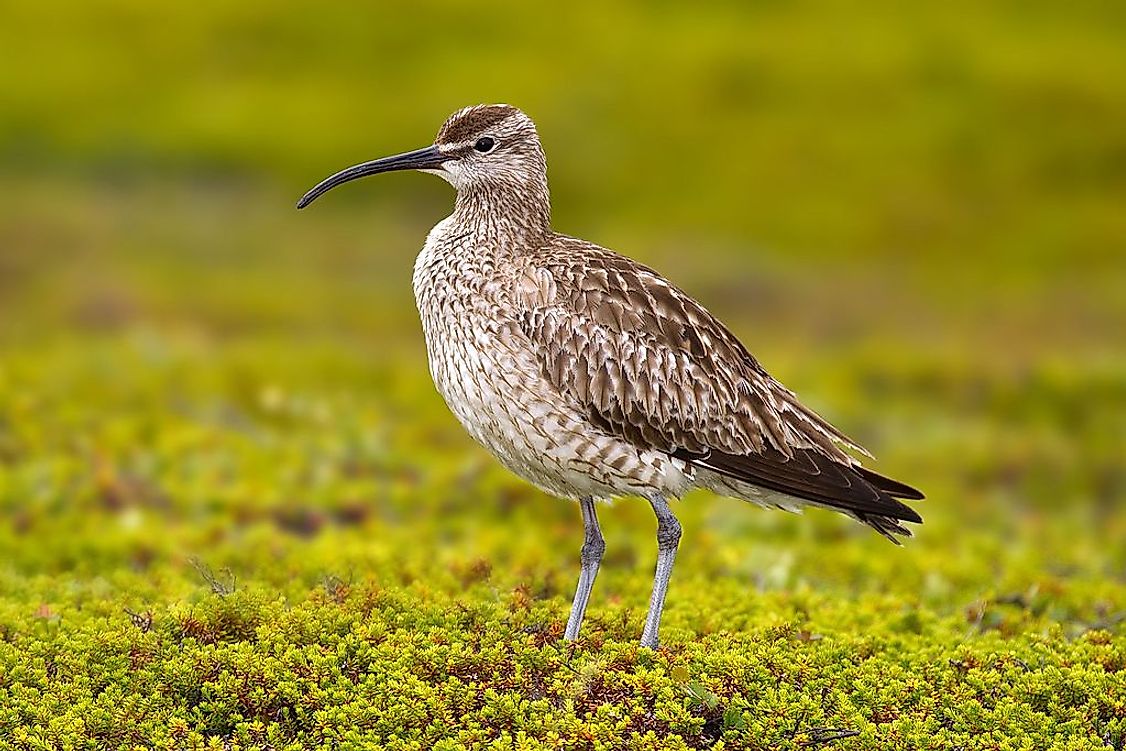
The Numenius phaeopus is the most widespread species of curlew. The birds breed throughout the subarctic regions of Asia, Europe, and North America and winter in South America, southern North America, South Asia, Africa, and Oceania. The birds are 37 to 47 cm long and have a grayish-brown plumage with a white rump and back. The bill of these birds is long, slender and curved. However, the bill is not a smooth curve but comes with a kink. There are 7 species of the whimbrel, the N. p. islandicus, N. p. rogachevae, N. p. phaeopus, N. p. hudsonicus, N. p. rufiventris, N. p. alboaxillaris, and N. p. variegatus. The birds probe in the mud for insects and crustaceans. They also feed on berries prior to migration.
7. Slender-billed curlew
The Numenius tenuirostris is a species of curlew that inhabits the peat bogs and marshy areas of the Siberian taiga. They migrate to the Mediterranean region for wintering and live in the shallow fresh-water habitats in the region. The curlew is 36 to 41 cm long, has a grayish brown plumage, whitish underparts (with dark brown streaks), rump, and lower back, and round or heart-shaped spots on the sides. Females of this species have a longer bill. The species is distinguished from the Eurasian curlew by its longer, more slender, and straighter bill and whiter plumage. The slender-billed curlew is the most threatened of the eight species of curlews. Hunting in the wintering grounds of the bird, habitat loss, and pollution has drastically reduced the population of this species. As of 2007, it was estimated that there are only about 50 surviving adult birds of the slender-billed curlew. Thus, the species is labeled as “Critically Endangered” on the IUCN Red List.
6. Eurasian curlew
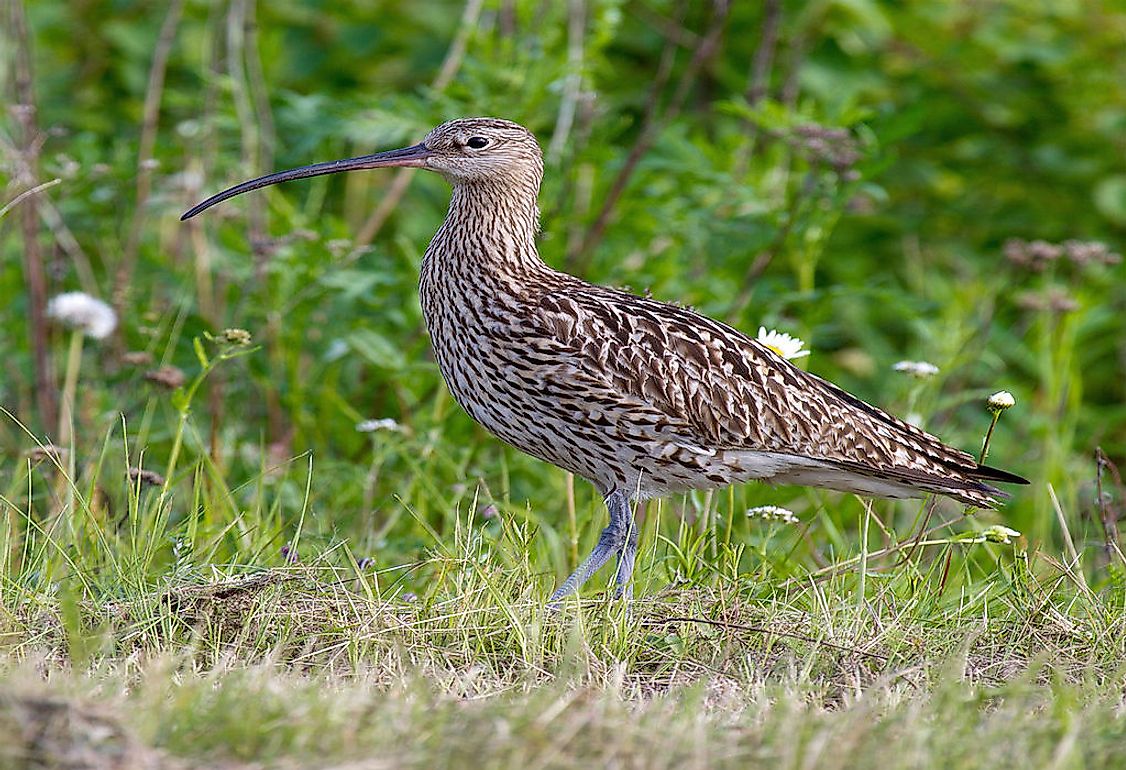
The Numenius arquata is a curlew species with widespread distribution. The bird ranges in temperate parts of Asia and Europe and winters in South Asia, southern Europe, and Africa. The Eurasian curlew has a length of about 50 to 60 cm. The legs of the birds are grayish-blue and the bill is long and curved. The sexes are quite similar in appearance. However, when a mating pair is sighted together, the one with the longer bill is usually the female. The whimbrel, another curlew species that share the range with the Eurasian curlew, closely resembles the bird in appearance. However, the whimbrel has a smaller size and a bill that is shorter with a kink, features that distinguish it from the Eurasian curlew. There are three subspecies of this bird, the N. a. arquata, N. a. orientalis, and the N. a. suschkini. The Eurasian curlew is recognized as “Near Threatened” by the IUCN.
5. Long-billed curlew
The Numenius americanus is a curlew species that live in the grasslands of central and western North America and migrates south to the coasts and inland locations for wintering. The bird is known for its long and downward curved bill that is only smaller than that of the Far Eastern curlew. The length of the bird is between 50 to 65 cm. The birds have a small head and long neck. Brown streaks are present on the crown of the bird. The underparts and neck are cinnamon-colored. The birds feed in large colonies with insects and crustaceans constituting the majority of their diet. The species is recognized as “Least Concern” by the IUCN due to a relatively stable population and widespread distribution.
4. Far Eastern curlew
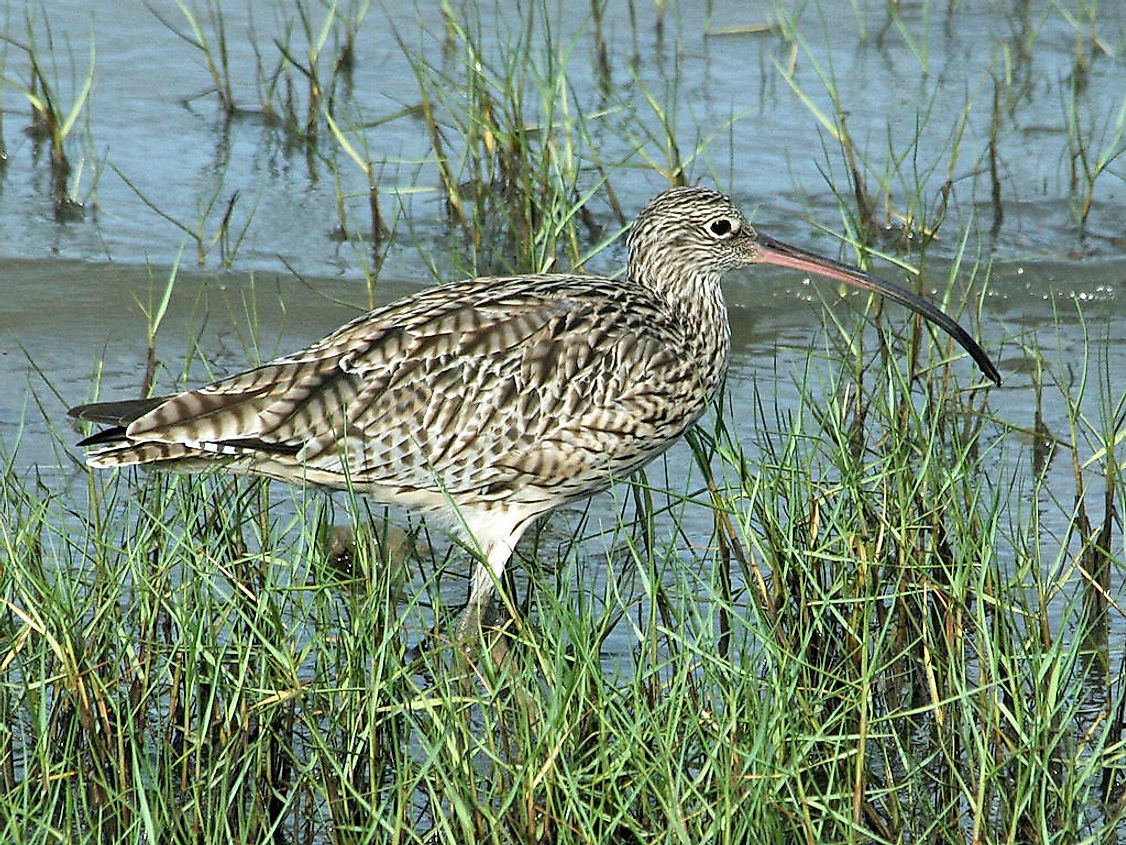
At 60 to 66 cm, the Numenius madagascariensis is not only the largest species of curlew but also the largest sandpiper species. The bill of the bird which is about 12.8 to 20.1 cm long, is also the longest bill for a sandpiper. The bill aids the bird in probing the mud in search of invertebrate species for food. The bird breeds in the swamps, marshes, and lake shores of northeastern Asia. In winter, the birds can be observed in parts of the mainland and islands of the southeast Asia and Oceania. The bird is an “Endangered” species with about 38,000 surviving individuals as of 2006.
3. Little curlew
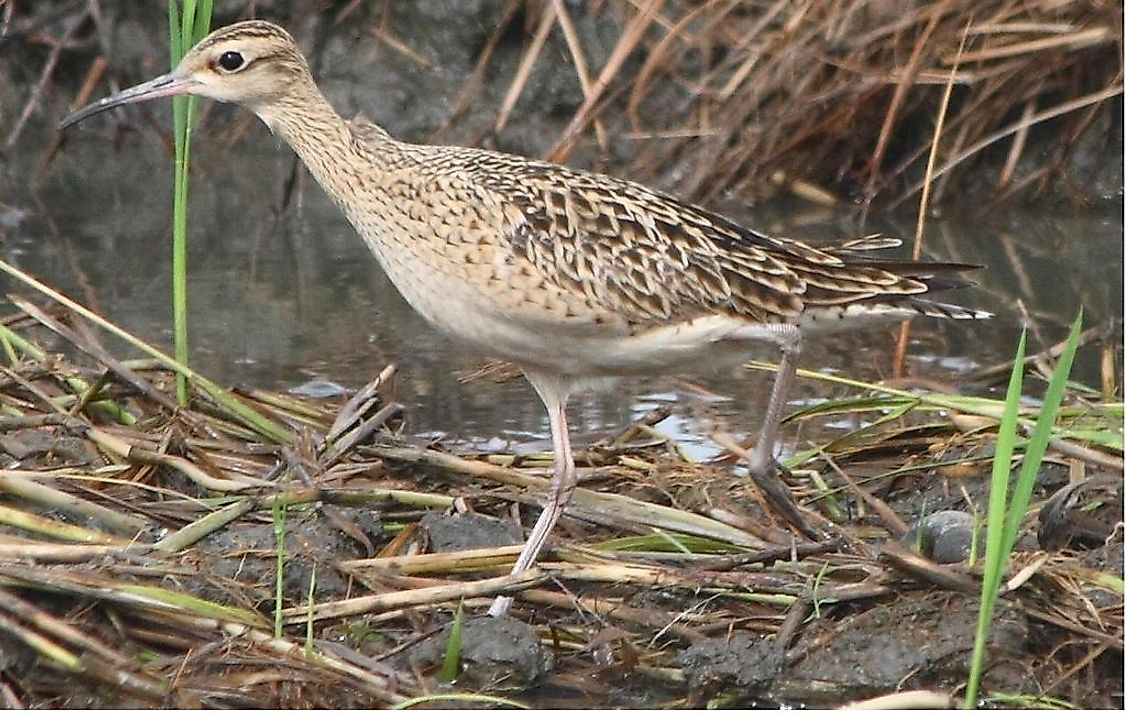
The Numenius minutus is a small species of curlew that breeds in Siberia’s far north and winters in Australasia. The birds inhabit river valleys and forest clearings within its breeding range in Siberia. It inhabits cultivated fields, grasslands, and freshwater habitats in its wintering grounds. The birds feed on invertebrates in the mud of its habitat. The little curlew has a grayish brown colored plumage and white colored belly. The bill of the bird is short and curved. The head pattern of the bird resembles that of a whimbrel.
2. Eskimo curlew
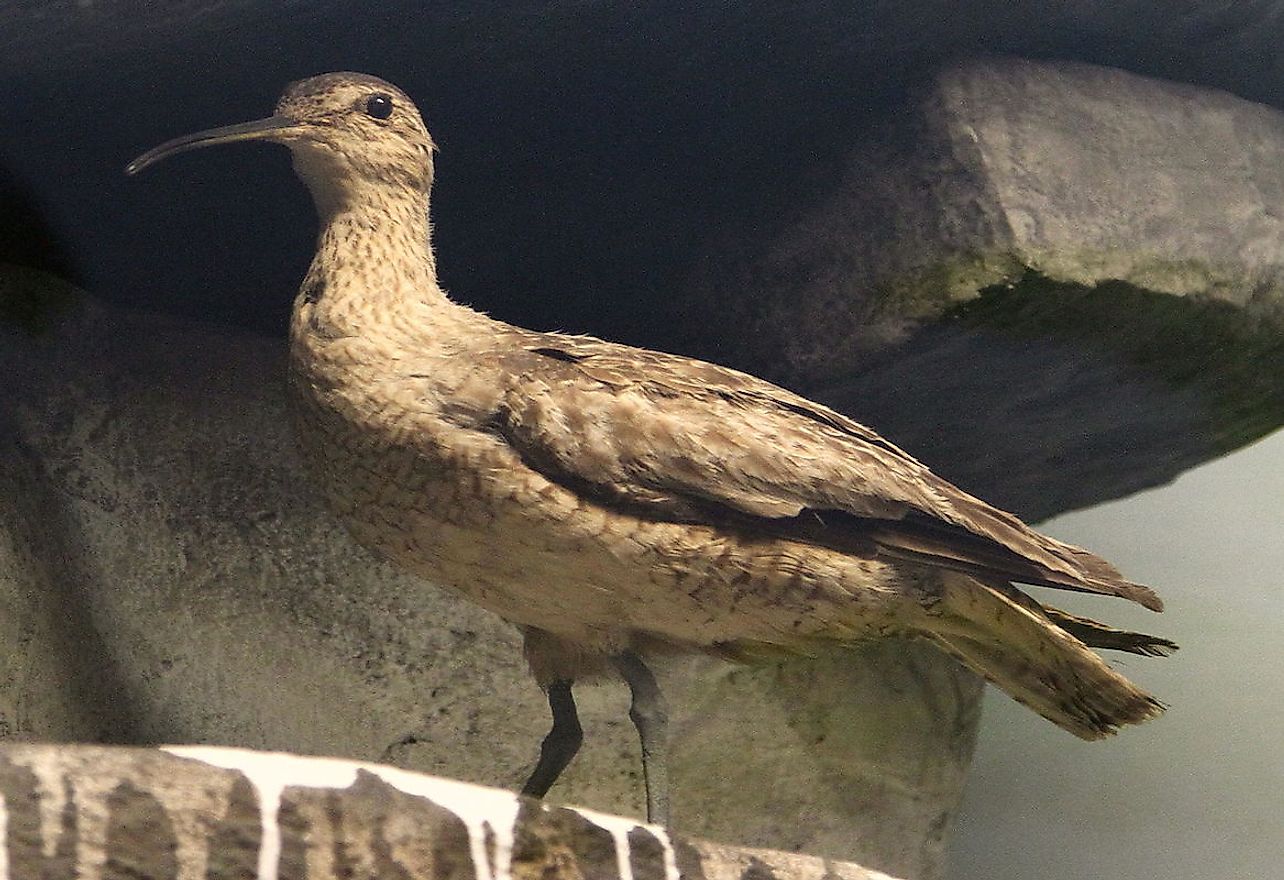
The Numenius borealis is a curlew species that were once numerous in its range that spread across the Arctic tundra in Alaska and Canada. Sadly, during the 1800’s, the birds were hunted down in millions each year, bringing down their number so low that today they are recognized as a “Critically Endangered” species. In fact, some even consider the species to be extinct since not a single individual has been seen for nearly 30 years. The bird has a length of about 30 cm. The upperparts of the bird have mottled brown color. The ventral surface of the bird is light brown. The bill of the Eskimo curlew is long and curved downward. The legs of the species are dark grayish in color.
1. Bristle-thighed curlew
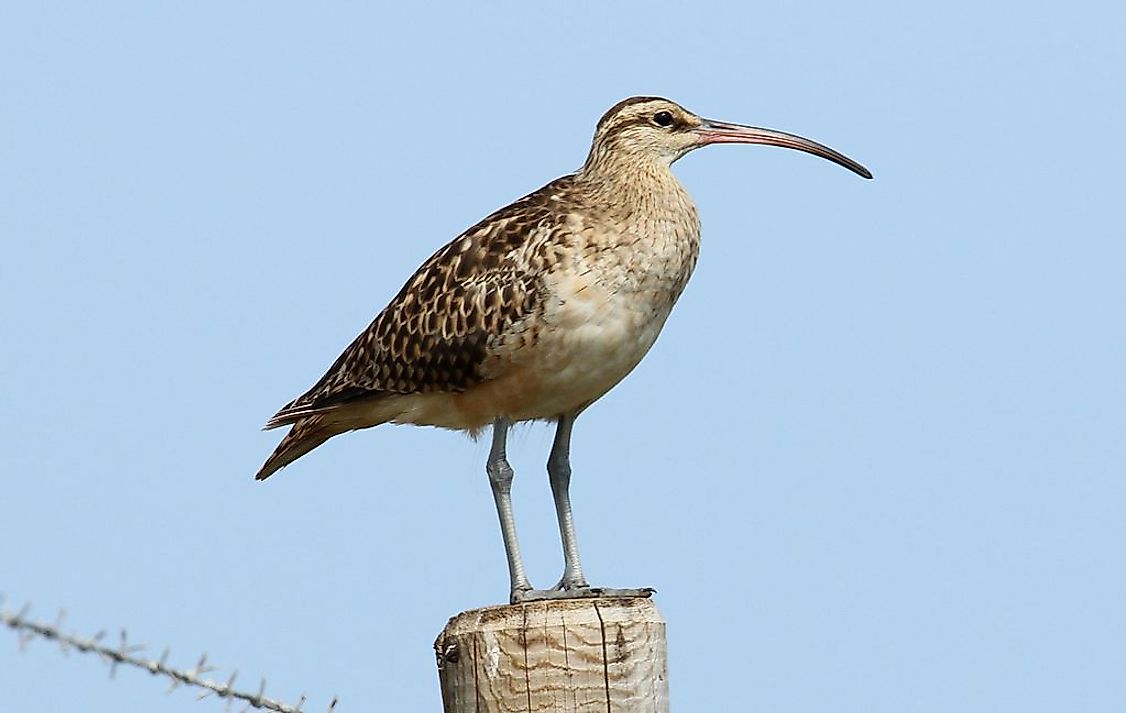
The Numenius tahitiensis is a curlew species that lives in Alaska in the breeding season and migrates to tropical islands in the Pacific Ocean during the cold season. The birds are 40 to 44 cm in size. The upperparts are spotted brown, the tail is buffy to rust-colored, and the belly has a lighter color. The bill of the bird is long and decurved. Bristled feathers are present at the base of the birds’ legs. The species is recognized as “Vulnerable” by the IUCN.











